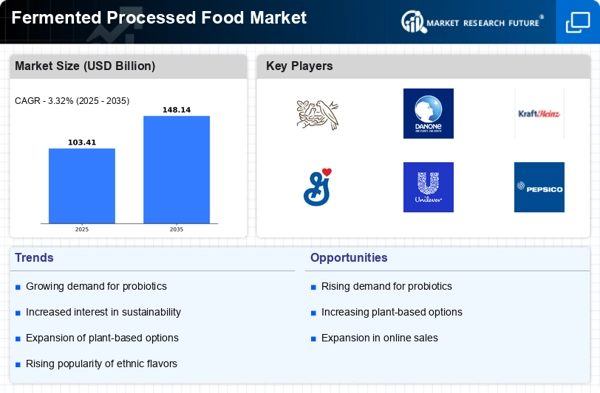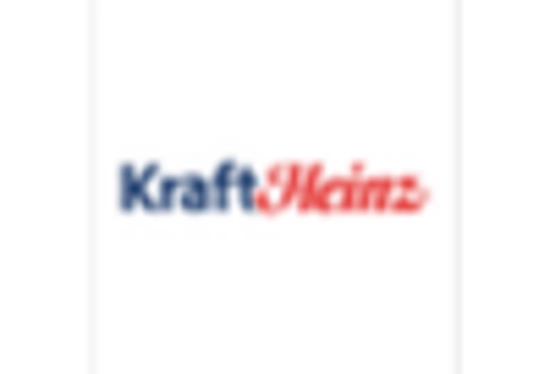The Fermented Processed Food Market is currently characterized by a dynamic competitive landscape, driven by increasing consumer demand for health-oriented products and the growing popularity of fermented foods. Major players such as Nestlé (CH), Danone (FR), and Kraft Heinz (US) are strategically positioning themselves through innovation and regional expansion. Nestlé (CH) focuses on enhancing its product portfolio with probiotic-rich offerings, while Danone (FR) emphasizes sustainability in its sourcing and production processes. Kraft Heinz (US) is actively pursuing mergers and acquisitions to bolster its market presence, indicating a trend towards consolidation in the sector. Collectively, these strategies contribute to a competitive environment that is both fragmented and evolving, as companies seek to differentiate themselves through unique product offerings and operational efficiencies.
Key business tactics employed by these companies include localizing manufacturing and optimizing supply chains to enhance responsiveness to market demands. The market structure appears moderately fragmented, with several key players exerting influence over various segments. This fragmentation allows for niche players to thrive, while larger corporations leverage their scale to capture a broader audience. The collective influence of these key players shapes the market dynamics, as they compete not only on product quality but also on sustainability and innovation.
In August 2025, Danone (FR) announced a partnership with a leading technology firm to develop AI-driven solutions for optimizing fermentation processes. This strategic move is likely to enhance product consistency and reduce production costs, positioning Danone (FR) as a leader in technological integration within the fermented food sector. The partnership underscores the importance of innovation in maintaining competitive advantage in a rapidly evolving market.
In September 2025, Kraft Heinz (US) completed the acquisition of a regional fermented food brand, which is expected to expand its footprint in the health-conscious consumer segment. This acquisition not only diversifies Kraft Heinz's product offerings but also aligns with the growing trend of consumers seeking functional foods that promote gut health. Such strategic actions reflect a broader industry trend towards consolidation and the pursuit of health-oriented products.
In October 2025, Nestlé (CH) launched a new line of plant-based fermented products aimed at the vegan market. This initiative is indicative of the company's commitment to sustainability and innovation, as it seeks to cater to the increasing demand for plant-based alternatives. The launch is expected to enhance Nestlé's market share in the growing segment of health-conscious consumers, further solidifying its competitive position.
As of October 2025, current competitive trends in the Fermented Processed Food Market are heavily influenced by digitalization, sustainability, and the integration of artificial intelligence. Strategic alliances are becoming increasingly important, as companies collaborate to enhance their technological capabilities and sustainability practices. Looking ahead, competitive differentiation is likely to evolve from traditional price-based competition to a focus on innovation, technology, and supply chain reliability, as companies strive to meet the changing preferences of consumers.

















Leave a Comment